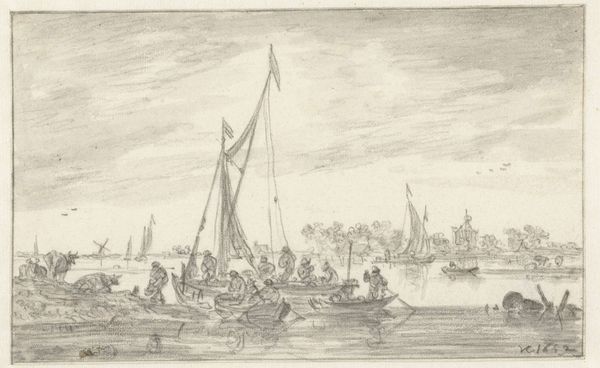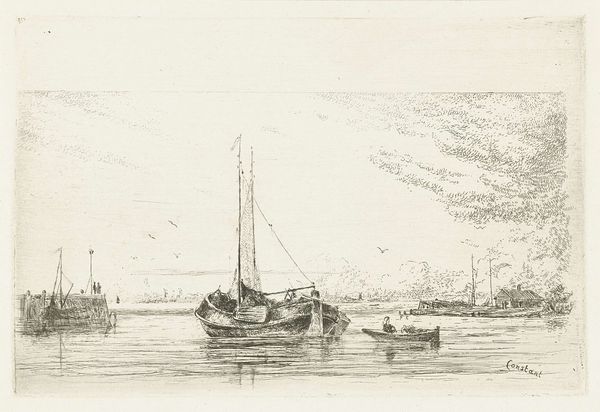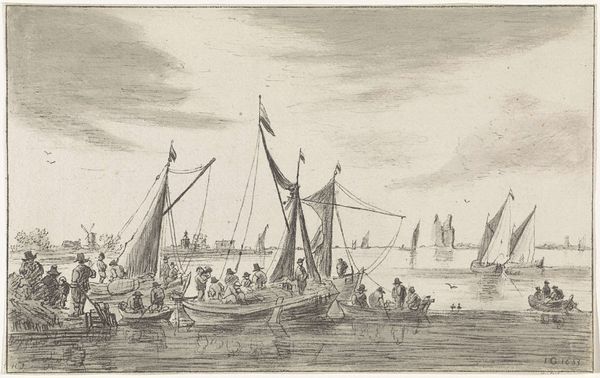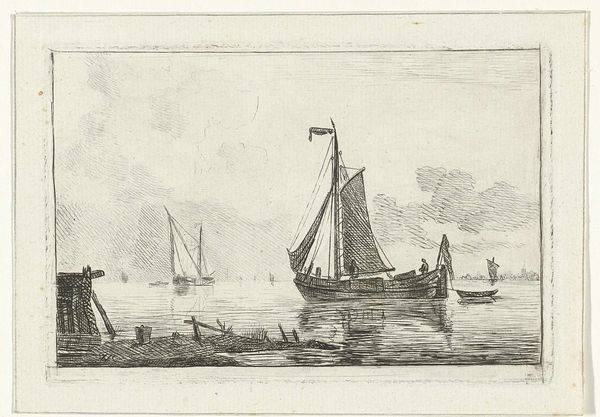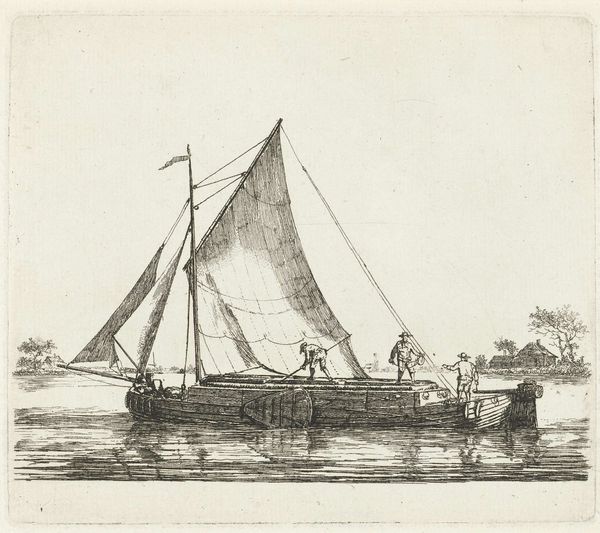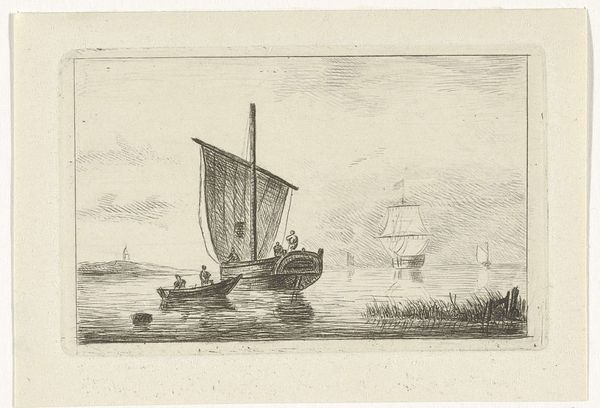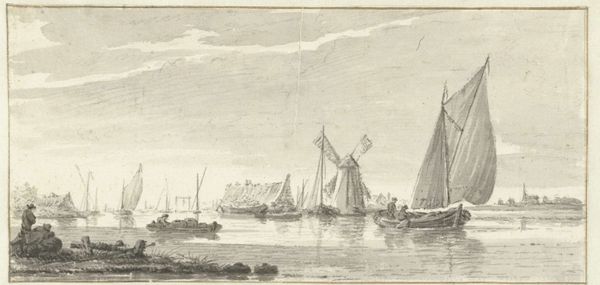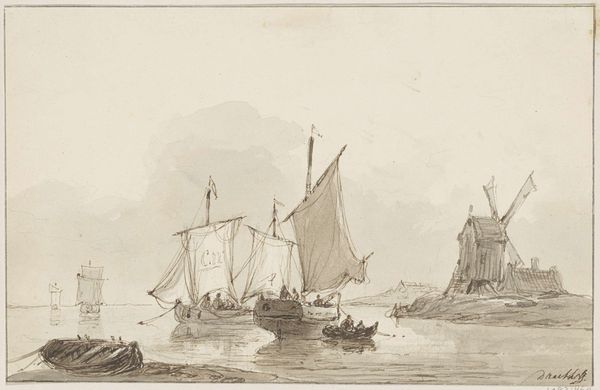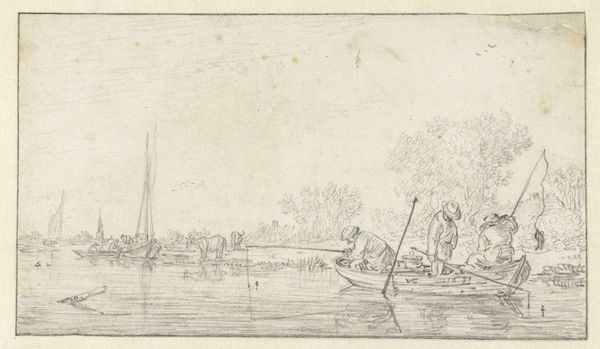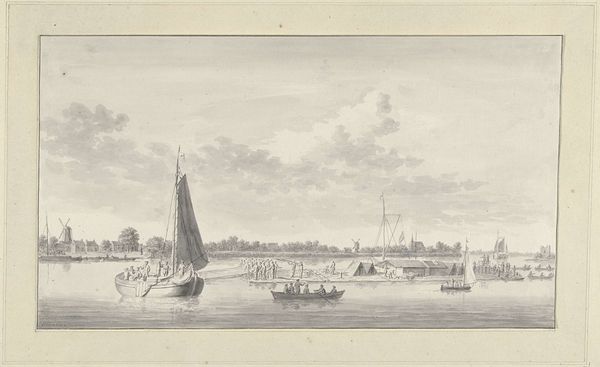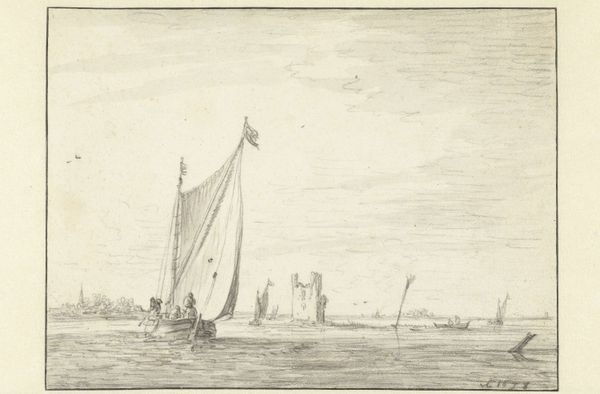
drawing, pencil
#
drawing
#
dutch-golden-age
#
landscape
#
pencil
#
cityscape
#
realism
Dimensions: height 122 mm, width 198 mm
Copyright: Rijks Museum: Open Domain
Curator: Welcome. We’re standing before Jan van Goyen’s “Riverbank with Three Sailing Ships,” created in 1652. It's a pencil drawing currently held here at the Rijksmuseum. Editor: Instantly, it feels calm, almost muted. A grayscale symphony, you know? The tiny figures feel so… consequential, or perhaps inconsequential, in the wider scape. There’s a strange little dance of focus and blur—like a fading dream. Curator: Indeed. Van Goyen was instrumental in shaping Dutch Golden Age landscape painting. His sketches, like this one, were often preparatory studies for larger works. He employed a tonal approach, emphasizing atmosphere and capturing the subtleties of light, which we certainly see here. The Realism style captures an idyllic everyday scene. Editor: A study… which, I hate to say, feels truer somehow. The way the masts claw towards the sky... There's movement even in the stillness, the quiet ripple of water reflecting all this busyness, this Dutch striving spirit, like it just appeared in the sky. He's just really good at finding the 'essence' of things. Curator: Precisely. While other Dutch painters focused on detail, Van Goyen emphasized atmospheric perspective, blurring details to create depth. He frequently captured the landscape around Leiden, where he spent a significant part of his career, or areas further along the coast. So we may very well be viewing a town like that from afar. Editor: A distant dream then. And look at how economically he suggests those houses on the distant shore – a smudge and a squiggle – almost Haiku like in brevity. It hints at how densely packed things actually are...the sails dominate but not brutally so. Everything holds together – like an image remembered on the wind. Curator: Van Goyen's style proved highly influential, particularly in the 17th century when the Dutch Republic saw a rise in paintings depicting daily life. This drawing allows us a more intimate glimpse into the artist’s process—a record of not just what he saw but also how he interpreted it. Editor: So here we have it… a quick memento of Dutch industry meets windswept beauty, I’m seeing things, obviously. He manages to get everything across without spelling it out – a fleeting glance made timeless. Thanks, Jan, for this gorgeous captured breath. Curator: Indeed. A testament to how simple tools and thoughtful observation can evoke such a rich sense of time and place.
Comments
No comments
Be the first to comment and join the conversation on the ultimate creative platform.
